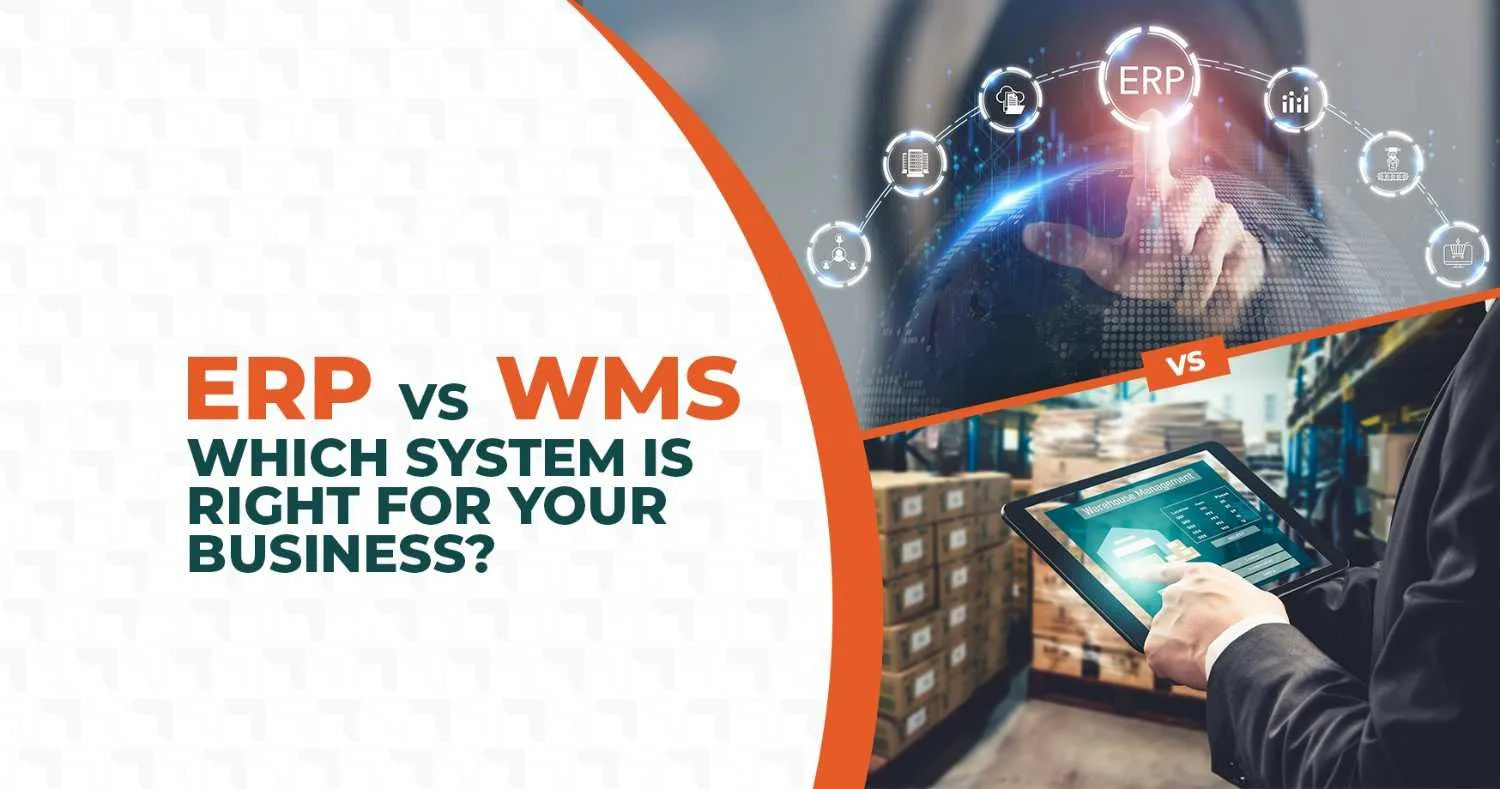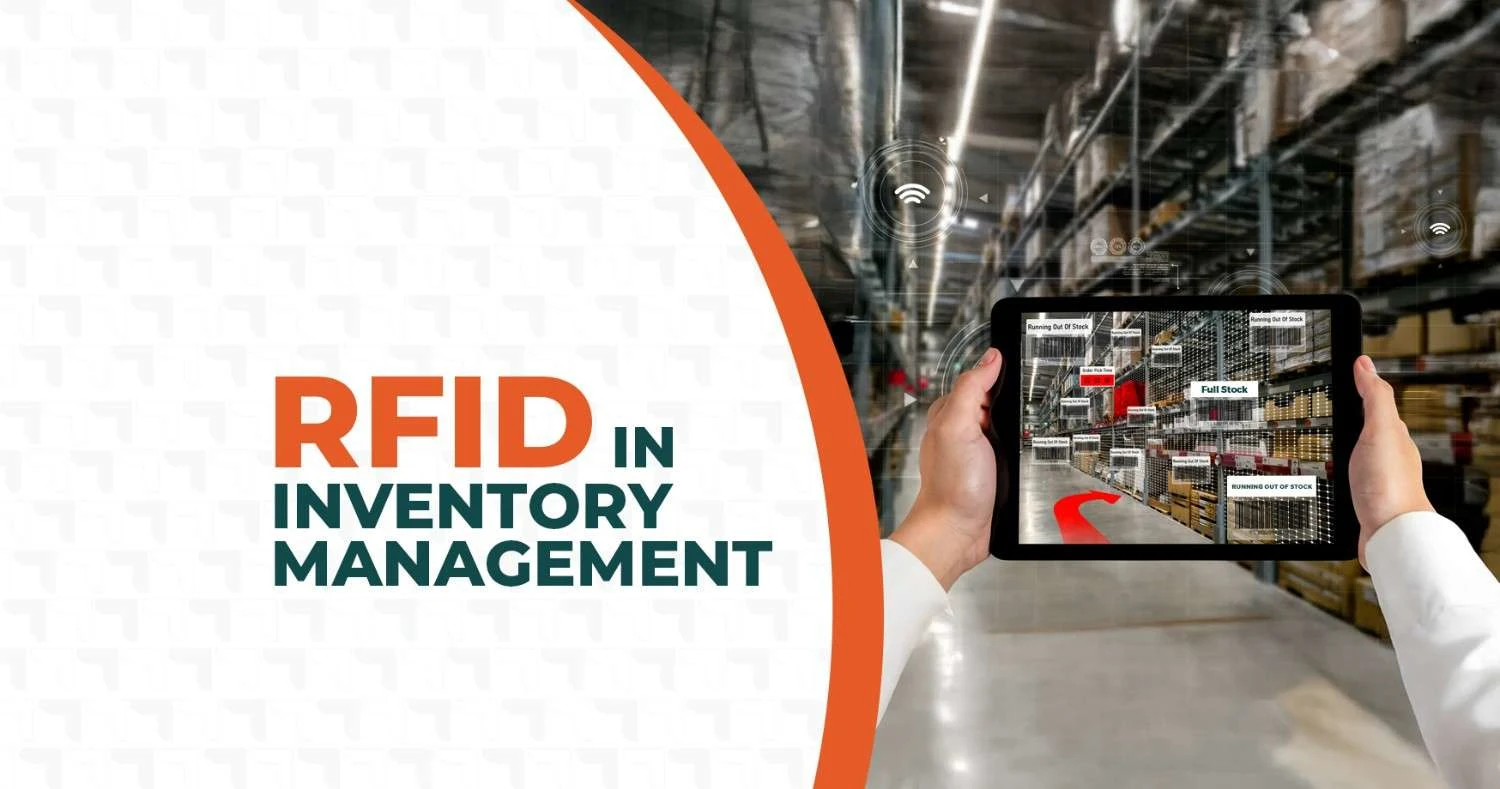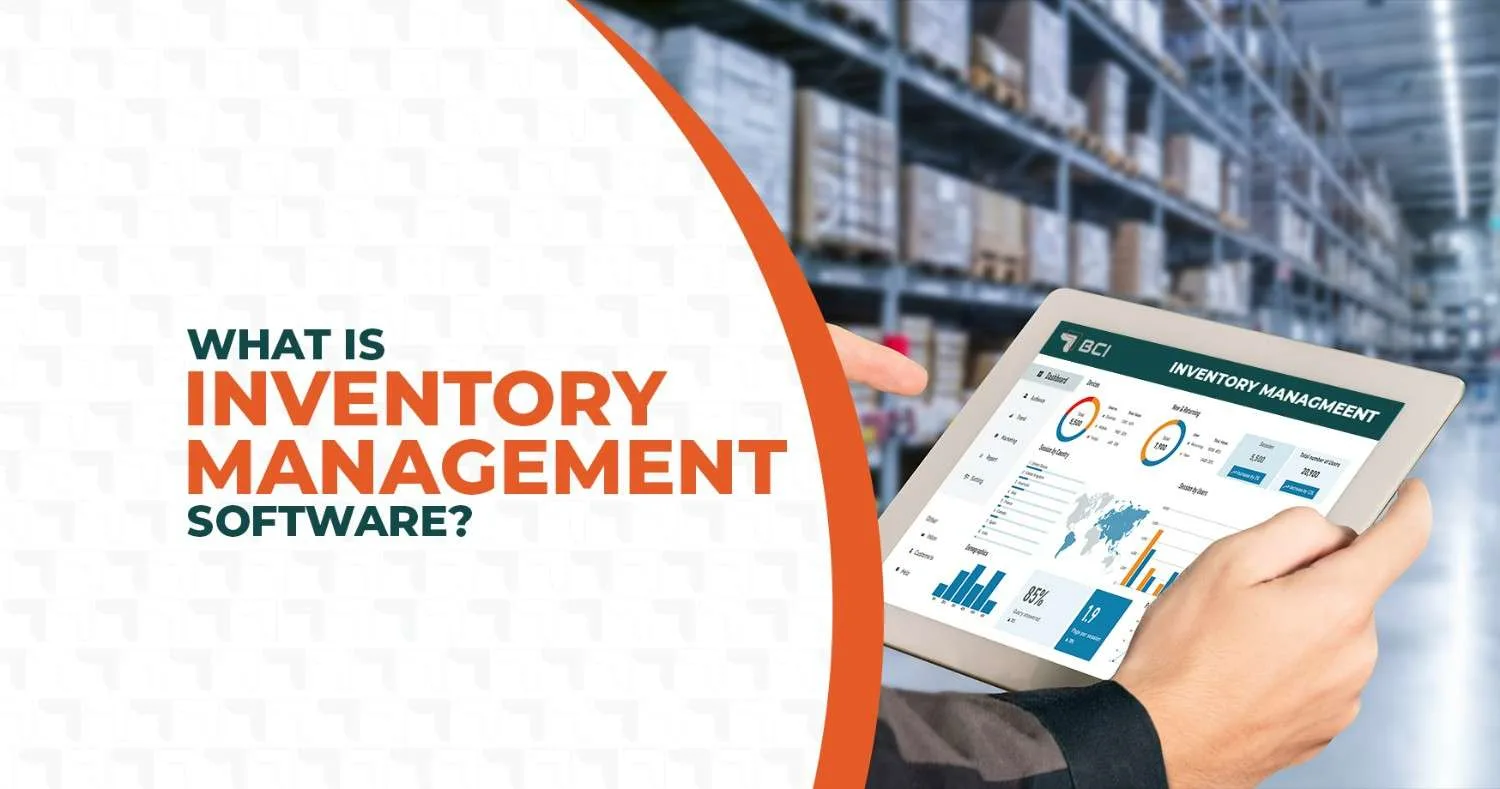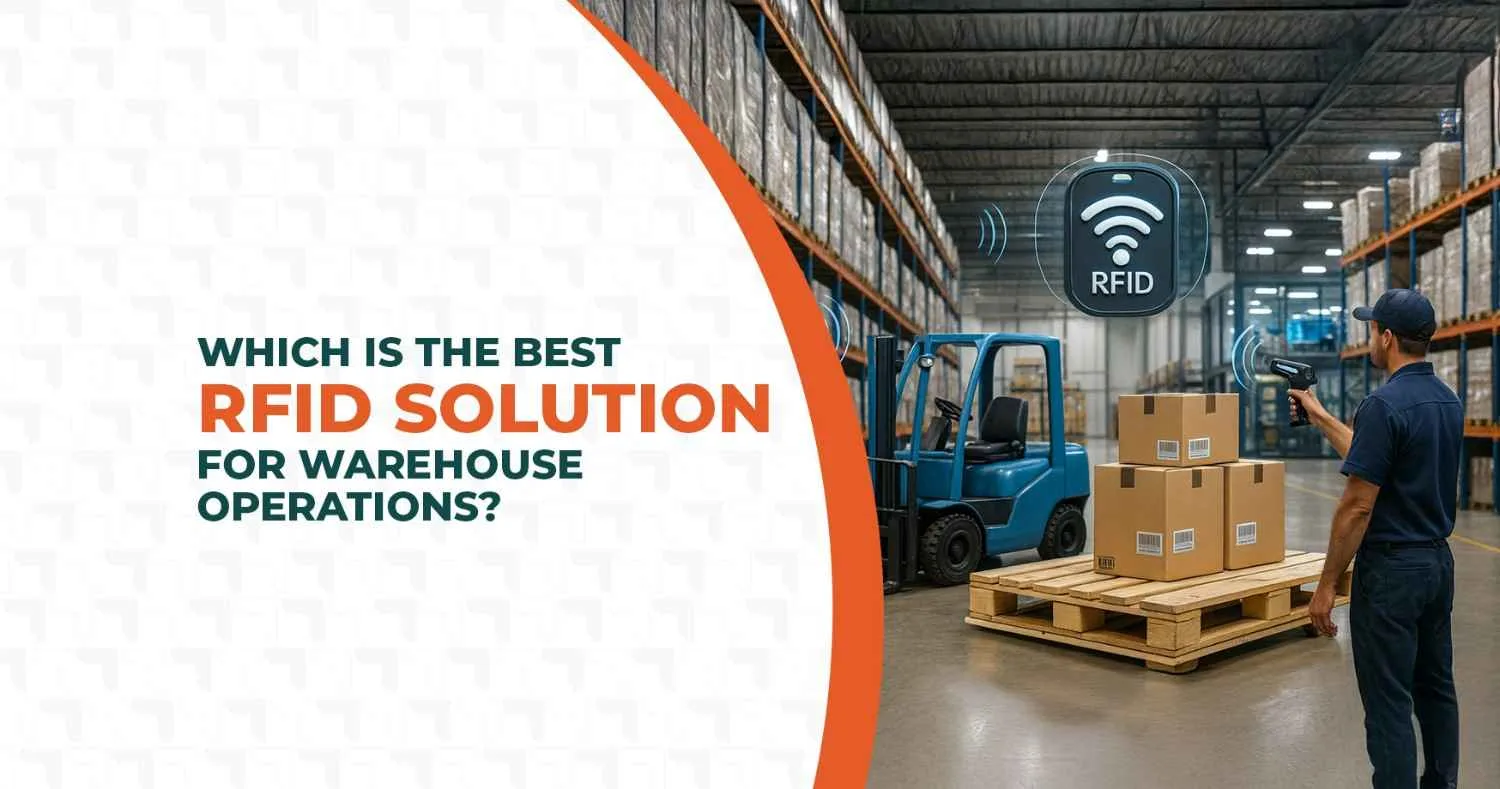
ERP vs WMS – Which System is Right for Your Business?
Scaling a business often exposes a critical gap: operations feel disjointed, inventory data lacks accuracy, and order fulfilment suffers delays. Without a structured system in place, departments operate in silos, decision-making slows down, and warehouse errors begin to escalate. Left unaddressed, these inefficiencies directly affect customer satisfaction, compliance, and profitability.
When organisations reach this turning point, two system choices emerge: ERP and WMS. While both improve visibility and control, they address fundamentally different needs. Read this blog to understand the difference between ERP vs WMS, so you can identify which platform aligns best with your current priorities, and when it makes sense to implement both.
What is an ERP System?
An ERP system is a suite of integrated modules that unifies data and workflows across the organisation. Typical ERP modules include finance and accounting, procurement, production planning, inventory, human resources, customer management, and analytics.
A mid‑sized apparel manufacturer uses ERP to synchronise purchase orders, shop‑floor production runs, and sales forecasts. When procurement enters a fabric purchase, the inventory module reserves stock, the finance module logs the payable, and the production schedule adjusts automatically. Managers gain one version of the truth for cash flow, capacity, and supply chain commitments.
What is a WMS?
A Warehouse Management System focuses on granular control of warehouse activities, from receiving to dispatch. It optimises bin locations, guides pick tasks, validates packing, and produces carrier labels for outbound loads. Laser scanners, vision systems, and handheld computers feed the WMS with real‑time data, creating an up‑to‑the‑second view of every SKU.
For example, a consumer‑electronics distributor introduces WMS in its large facility. The software maps the warehouse, assigns fast‑moving items to low‑level pick faces, and uses handheld terminals to verify barcodes at pick confirmation. Mis‑picks drop by 80 per cent, and order lead time falls from twenty‑four hours to eight.
Learn more in Types of Warehouse Management Systems for deeper coverage of WMS deployment models.
Difference between ERP vs WMS
Most ERPs include an inventory module, and many WMS providers in India offer basic accounting exports. However, each platform solves a different primary problem. ERP coordinates the full business cycle, whereas WMS drills down into warehouse tasks that demand sub‑second decisions.
1. Scope of Functionality
ERP manages cross-functional processes like procurement, finance, production, and order management. WMS is specialised for warehouse execution tasks, including goods receipt, inventory allocation, order picking, packaging, and dispatch.
2. Depth of Inventory Management
ERP tracks inventory at a high level using general ledger and valuation rules. WMS maintains item‑level and bin‑level visibility with lot codes, serial numbers, and machine vision validation. Have a look at the benefits of warehouse management system for detailed gains from deeper inventory control.
3. User Roles and Departments Involved
ERP is accessed by cross-departmental users such as finance, procurement, planning, and management teams. WMS is primarily used by on-ground warehouse staff, inventory controllers, and logistics leads.
4. Integration Capabilities
ERP often ships with native connectors for customer relationship management and business intelligence. WMS excels at seamlessly integrating with ERP, scanning devices, conveyor controllers, vision‑guided sorters, and warehouse automation robots.
5. Implementation Time and Cost
ERP rollouts affect enterprise-level processes and require broader configuration, governance, and training. WMS can be deployed faster within individual sites, although setup still requires detailed warehouse logic mapping and hardware alignment.
6. Real‑Time Data and Reporting
ERP captures transactional-level data and updates reports based on process completion. WMS provides real-time tracking and live operational metrics, including picker productivity, order fulfilment status, and dock utilisation, powered by continuous device feedback.
ERP vs WMS – Comparison Table
Can ERP and WMS Work Together?
Yes. Many companies link both platforms, so the ERP handles accounting, demand planning, and procurement while the WMS manoeuvres through the hands‑on warehouse tasks. Middleware or direct APIs pass orders, inventory moves, and cost updates between systems. Benefits include centralised reporting, elimination of data silos, higher pick accuracy, and stronger demand planning. Adding RFID in Supply Chain Management further boosts speed by automating pallet and carton reads at dock doors and conveyors.
How to Choose the Right System between WMS and ERP for Your Business?
Choosing between ERP and WMS depends on your current operational priorities, business scale, and the level of control you need over your processes. Understanding where your pain points lie helps you pick the right system—or decide if a combined approach is the best fit.
1. If Your Business Needs Enterprise‑Level Process Integration
If your company operates across multiple departments, plants, or geographic locations, and you're struggling to align finance, procurement, production, and sales—ERP should be your first move. An ERP system builds a unified foundation for data, approvals, and reporting.
2. If You Need Warehouse Efficiency First
When fulfilment speed, order accuracy, and inventory traceability are the operational focus, start by finding a good WMS provider.
WMS is built to manage high-frequency movement, optimise floor space, and plug into barcode/RFID devices and warehouse automation systems. It delivers faster ROI where delays, errors, and lack of stock visibility are hurting output.
3. If You're Scaling or Digitizing Operations
Growth-stage businesses with plans to scale operations regionally or globally can benefit from a modular approach. Deploy WMS where fulfilment agility is needed today, and layer in ERP as you scale departments and data complexity. This future-proofs your tech stack while keeping cost and integration overhead low in early stages.
Which is better between ERP and WMS?
Better depends on the business problem. ERP excels at company‑wide coordination, while WMS owns the last‑mile of inventory control inside the four walls. When the organisation needs financial insight, supplier collaboration, and production planning, ERP offers the broader framework. When order accuracy, labour productivity, and warehouse automation drive value, WMS delivers deeper functionality. In many cases the optimal answer is a hybrid stack where ERP and WMS share master data and each runs the tasks it handles best.
Still unsure whether ERP or WMS fits your operation best?
Explore our industry specific solutions built for real-world challenges, whether you’re fixing warehouse inefficiencies or aligning enterprise-wide workflows.
Visit our WMS Product Page to have a deeper look, or speak to our team for a custom roadmap based on your supply chain goals, system maturity, and industry-specific needs.
FAQs
1. What is the difference between ERP and WMS?
ERP manages business-wide functions like finance, procurement, and inventory planning. WMS controls warehouse-specific operations such as receiving, picking, stock movement, and dispatch with greater operational detail.
2. Which is better: ERP or WMS?
ERP is suitable when cross-functional process control is the priority. WMS is more effective when warehouse throughput, accuracy, and inventory tracking need higher precision.
3. Do I need both ERP and WMS?
Businesses with growing order volumes or multiple fulfilment locations often rely on both. ERP handles strategic operations, while WMS ensures real-time warehouse efficiency.
4. Can ERP include WMS functionality?
Some ERP platforms offer basic warehouse features. However, they typically lack the granularity and automation compatibility that a full-scale WMS provides.
5. What are the benefits of WMS software?
WMS software increases warehouse speed, improves order accuracy, reduces inventory discrepancies, and enables better space utilisation through rule-based logic.
6. How does ERP help with supply chain operations?
ERP coordinates supplier data, production planning, and inventory forecasts. This leads to better material availability, fewer bottlenecks, and improved delivery timelines.
7. What industries typically use WMS systems?
Sectors such as retail, logistics, consumer goods, pharma, and electronics adopt WMS to manage stock accuracy, batch movement, and dispatch timelines.
8. Can WMS work without ERP?
Yes. WMS can operate independently for managing warehouse workflows. ERP integration becomes relevant when broader financial or production visibility is needed.
9. How to choose between ERP and WMS for my business?
Select ERP when enterprise-wide planning and data centralisation are critical. Choose WMS if fulfilment accuracy, real-time stock visibility, and warehouse control are your current focus.
Share this page
Get in Touch
Ready to take your business to the next level with BCI (Bar Code India)? We're just a phone call or email away.


